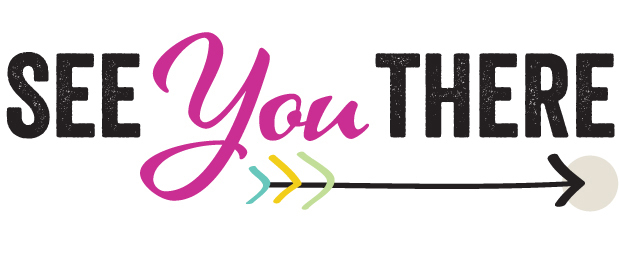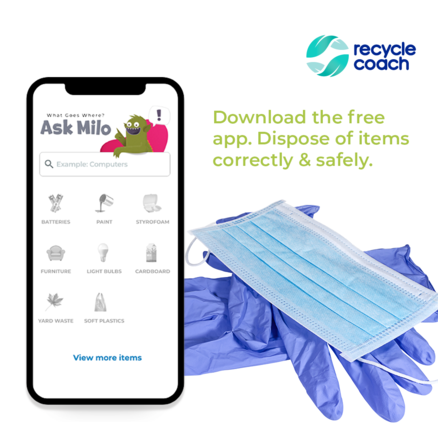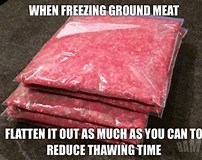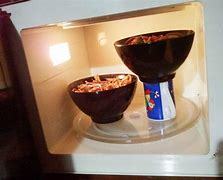|
DETAILS LISTED BELOW. SURE HOPE YOU CAN JOIN ME!
I’m a little bogged down with hundreds of phone calls and emails, so this week's e-Newsletter is a bit late getting published. Please forgive me for its lateness, because I'm quite sure you've been sitting by your computer with bated breath awaiting its arrival.
There’s a lot going on in our community, and as a result, most of my time is spent on the phone and on my laptop returning calls and addressing issues. A huge part of my time is spent defending civil liberties and trying to keep some irrational folks from coming to protest on my lawn (as one woman threatened she'd do because I did not co-sponsor the resolution introduced by my Republican colleagues calling for a no-confidence vote and the mayor’s resignation).
I reserve the right to be judged by my constituents after I cast a vote for or against something that comes before the Council. District 7 is diverse in its makeup and certainly in its political opinions. I should respectfully, however, be given the opportunity to hear from my constituents, have the benefit of debate on the floor and consider any amendments that might be presented on a measure before I cast a vote. It doesn’t matter whether I co-sponsor or sponsor a resolution or ordinance; what matters is how I cast my vote. In casting my vote, I go through a process, because as an elected official, I (nor other elected officials) should ever make decisions in a vacuum.
Another hot topic at the Council was the safety (buffer) zone ordinance. I received plenty of emails and calls on this subject - both pros and cons - that I lost count. But, I can tell you this, I am now suffering from eye fatigue.
As fate would have it, I was unable to attend the Council meeting on Thursday. While I’m sure this is of no interest to some of you, I will share that I was virtually in Milwaukee, WI fulfilling my obligations as a certified delegate to the national convention. So, I missed the opportunity to cast a vote on the safety zone proposal. I did, however, review it the next day. It attracted quite the debate – as I knew it would. After hearing the varying opinions of my colleagues and the various amendments that were defeated along the way, I was glad the ordinance failed. It became a topic of morality and abortion rights, and that was unfortunate. If the ordinance was truly proposed for “safety,” it should have been clearer on who would be responsible for security and the cost of that security. There also should have been more examples of how the ordinance helps other healthcare facilities. I only heard on colleague express this concern. The debate seemed to have been all about the EMW clinic.
Please attend next Saturday's Muffins with McCraney to find out "the rest of the story." I will share with you how I would have voted on the buffer zone ordinance and share an experience with you that I have not shared with you before, because it's so deeply personal and sad. I hope you'll join me!
The next virtual "Muffins with McCraney" is next Saturday, August 29, 2020, from 10:00 a.m. - 11:00 a.m. Tune in to Webex to ask questions, make comments, share your thoughts about your local government and hear about the many issues being dealt with at Metro Council and throughout out city.
A portion of the agenda will include comments from the Councilwoman about current civil unrest, the resolution calling for the mayor’s resignation, proposed developments in District 7, and the work she’s doing as co-chair of the Civilian Review Board Workgroup. “I will answer any question that is on the hearts and minds of my constituents. I believe all elected officials should be transparent, and I look forward to hearing from my neighbors and friends of District 7. We will engage in open and honest dialogue,” says McCraney. “Get ready to brew a cup of coffee, have a muffin or two handy, and from the comfort of your own home, let’s talk.”
Webex Sign in:
Meeting number (access code): 160 041 1095
Meeting password: 75hDATiEaP9
Tap to join from a mobile device (attendees only)
+1-415-655-0001,,1600411095## US Toll
Join by phone +1-415-655-0001 US Toll
Remember this COVID-19 survival basket? It is filled with a nice coffee table book, snacks and goodies, masks, hand sanitizer and so much more! Well, for each person attending the August 29th "Muffins with McCraney" virtual meeting, your name will be entered in a drawing to win the entire thing. The value is approximately $250, and the lucky person winning the basket will probably share some of its contents with neighbors and friends. It's a great gift basket! So, please mark your calendar and join me next Saturday at 10:00 a.m. The drawing will take place at the end of the virtual meeting, and you must be present to win.
 |
 |
Louisville Metro Council on Thursday rejected an ordinance that would have allowed health care facilities, including abortion clinics, to create a "buffer zone" outside the entrances to those facilities. The legislation failed in a 12-13 vote after lengthy debate. It was introduced as a way to both preserve access to healthcare services and provide protection from the COVID-19 virus, which co-sponsors said had made the need for the safety zone more urgent.
But council members in opposition raised questions about who would be responsible for enforcing the ordinance, and about the perceived restricting of the First Amendment rights of those who gather around the EMW clinic to counsel women entering the facility. Also, conversation centered around whether it was fair to restrict the counselors or protestors who gather outside the clinic vs the protestors who gather downtown.
I was unable to attend the Council meeting, therefore, I did not cast a vote on the safety zone issue. My vote on this measure would not have made a difference in the outcome. If I would have voted "Yes," the measure would have failed, and if I would have voted "No," the measure would have failed because my "No" vote would have created a tie vote. In parliamentary procedures, a tie vote defeats a measure.
Click below to access media coverage about the buffer zone vote:
Courier Journal
https://www.courier-journal.com/story/news/politics/metro-government/2020/08/20/louisville-metro-council-rejects-buffer-zones-abortion-clinics/5618890002/
WDRB 41
https://www.wdrb.com/news/metro-council-rejects-ordinance-creating-buffer-zones-outside-louisvilles-health-care-facilities-abortion-clinic/article_bb8a2362-e350-11ea-bb49-e3a1337f185f.html
WFPL
https://wfpl.org/metro-council-narrowly-rejects-buffer-zones-for-health-care-facilities/
WLKY 32
https://www.wlky.com/article/metro-council-votes-down-ordinance-for-buffer-zone-at-health-care-facilities-abortion-clinics/33662219
WAVE 3
https://www.wave3.com/2020/08/21/ordinance-aimed-protect-abortion-clinic-patients-bystanders-fails-metro-council/
Louisville Metro Council is considering banning police from using tactics that obstruct breathing or blood flow to the brain. This is part of a proposal that also promotes de-escalation and limits force options for officers. The proposed ordinance is based on policy recommendations from Campaign Zero, a national nonprofit advocacy group focused on ending police violence, and "8 Can't Wait" - an organization's campaign to "bring immediate change" to police departments through the adoption of eight use of force policies. One of the ordinance's sponsors, Louisville Councilwoman Jessica Green, D-1st District, said the organization's study found that adopting the recommendations could reduce police shootings by up to 72%. The content of the ordinance, which has nine recommendations, mirrors some of LMPD's current force policy, Green said. After comparing the policies to LMPD's, Green said there are four the department doesn't address that should be implemented. Click on links below to view the media coverage on this story.
Courier Journal
https://www.courier-journal.com/story/news/crime/2020/08/20/proposed-ordinance-limits-louiville-police-use-of-force/5616130002/
CLICK HERE TO ACCESS THE ABSENTEE BALLOT PORTAL: https://vrsws.sos.ky.gov/ovrweb/govoteky
or click on link below:
GoVoteKY.com
Quick Links: Where Do I Vote? In-House Absentee Voting
The bipartisan voting plan for Kentucky's General Election agreed to by Governor Andy Beshear and Secretary of State Michael Adams last week received final approval on Thursday, allowing a broad excuse to vote by mail and three weeks of early in-person voting.
The Kentucky State Board of Elections voted 7-1 to approve 24 pages of emergency regulations detailing how the November election would be administered amid the COVID-19 pandemic. Under the new voting rules, any registered voter concerned about contracting COVID-19 by casting a ballot in person can request an absentee ballot through the state's online portal and submit it through the mail or in designated drop-off boxes in their home county.
Voter’s Checklist—Things To Do Before Election Day
- Confirm you are registered to vote several weeks before election day. (The registration deadline in Kentucky is always 28 days before each election. In 2020, the last day to register to vote is October 5th by 4 p.m.)
- Update your registration if your address, name, or political affiliation has changed.
- Know how and when to apply for an absentee ballot if you are unable to vote at your polling place on election day.
- Know your options for early voting.
- Know the voter identification requirements in Kentucky.
- Know your polling place and how to get there.
- Familiarize yourself with the voting device used in Kentucky. Learn how the device is accessible to voters with disabilities. Call the Board of Elections and ask for training before the election if you need to practice on a device.
- Learn what assistance is available in languages other than English.
- Know what time the polls open and close. (In Kentucky, polls open at 6 am, and closes at 6 pm.)
- Become acquainted with the candidates and issues on the ballot.
- Consider becoming a poll worker! Call the Board of Elections office to learn more. (502-574-6100)
In the weeks ahead, the Governor, Secretary of State, State Board of Elections and local election officials will educate Kentuckians on the General Election plan. Details of the plan include:
Absentee ballot by mail
- Kentuckians concerned with contracting or spreading COVID-19 can request a ballot by mail.
- An online portal will launch within the week to allow Kentuckians to request a ballot by mail. Ballots can be requested through the portal through Oct. 9, and through traditional means after.
- Mail ballots must be postmarked by Election Day, Nov. 3, and received by Nov. 6.
- Drop boxes will be available for Kentuckians to return their mail ballots if they are concerned about postal delays. County clerks will determine these locations.
Early voting
- Beginning Oct. 13, three weeks before the election, every work day between Oct. 13 and Election Day, and every Saturday for at least four hours, every county clerk will provide a location for safe in-person voting.
- Early voting is not absentee voting – anyone can vote early for any reason.
Election Day voting
- County election officials will decide election sites on Election Day. The State Board of Elections, Secretary of State and Governor will approve each plan.
- Every county will have at least one voting super-center, where everyone from the county can go to vote, regardless of his or her precinct.
Voter identification
- Kentuckians who were unable to get a driver’s licenses or photo ID due to the pandemic because their clerk’s office was closed, or because they were afraid of exposing themselves to COVID-19, can sign a document explaining this concern and cast their ballot.
Absentee ballot request deadline: October 9, 2020
Early voting begins: October 13, 2020
General Election Date: November 3, 2020
2020 marks the 100th anniversary of women's suffrage in America. While we celebrate the women who led the struggle, we also honor the Native American women who inspired them, and the African American women who tried to join them in the struggle for a more perfect union.
Beginning in the mid-19th century, several generations of woman suffrage supporters lectured, wrote, marched, lobbied, and practiced civil disobedience to achieve what many Americans considered a radical change in the Constitution – guaranteeing women the right to vote. Some suffragists used more confrontational tactics such as picketing, silent vigils, and hunger strikes.
In July 1848 Elizabeth Cady Stanton and Lucretia Mott organized the first women's rights convention in Seneca Falls, NY. The Seneca Falls Convention produced a list of demands called the Declaration of Sentiments. Modeled on the Declaration of Independence, it called for broader educational and professional opportunities for women and the right of married women to control their wages and property. After this historic gathering, women’s voting rights became a central issue in the emerging debate about women’s rights in the United States.
Many of the attendees to the convention were also abolitionists whose goals included universal suffrage – the right to vote for all adults. In 1870 this goal was partially realized when the 15th amendment to the Constitution, granting black men the right to vote, was ratified. Woman suffragists' vehement disagreement over supporting the 15th Amendment, however, resulted in a "schism" that split the women's suffrage movement into two new suffrage organizations that focused on different strategies to win women voting rights.
In 1890, the NWSA and AWSA merged into the National American Woman Suffrage Association (NAWSA). It became the largest woman suffrage organization in the country and led much of the struggle for the vote through 1920, when the 19th Amendment was ratified. Stanton became its president; Anthony became its vice president; and Stone became chairman of the executive committee. In 1919, one year before women gained the right to vote with the adoption of the 19th amendment, the NAWSA reorganized into the League of Women Voters.
Wealthy white women were not the only supporters of women's suffrage. Frederick Douglass, formerly enslaved and leader of the abolition movement, was also an advocate. He attended the Seneca Falls Convention in 1848. In an editorial published that year in The North Star, the anti-slavery newspaper he published, he wrote, "...in respect to political rights,...there can be no reason in the world for denying to woman the elective franchise,..."
Although white women did not want black women to march with them, mainly because they thought that if black women joined the march, the cause would be lost and the men would not take their movement seriously. However, a growing number of black women actively supported women's suffrage during this period. They organized women’s clubs across the country to advocate for suffrage, among other reforms. Prominent African American suffragists included Ida B. Wells-Barnett of Chicago, a leading crusader against lynching; Mary Church Terrell, educator and first president of the National Association of Colored Women (NACW); and Adella Hunt Logan, Tuskegee Institute faculty member, who insisted in articles in The Crisis, a publication of the National Association for the Advancement of Colored People, that if white women needed the vote to protect their rights, then black women – victims of racism as well as sexism – needed the ballot even more.
Eventually suffragists won the political support necessary for ratification of the 19th Amendment to the U.S. Constitution. For 42 years, the measure had been introduced at every session of Congress, but ignored or voted down. It finally passed Congress in 1919 and went to the states for ratification. In May, the House of Representatives passed it by a vote of 304 to 90; two weeks later, the Senate approved it 56 to 25.
NOTE: This information was gathered from the website of National Archive, which is found in the public domain.  Materials created by the National Archives and Records Administration are in the public domain. Materials created by the National Archives and Records Administration are in the public domain.
The more things change, the more they stay the same. Above is a picture of a suffrage march (Ida B. Wells called it a processional). Similar to some of the protests occurring in downtown Louisville, an organized and peaceful protest can bring about change. However, also similar to protests downtown, sometimes a little more aggression is used to get a message to be taken seriously. Suffragette Alice Paul became frustrated with the suffrage movement’s leadership, and broke with the National American Woman Suffrage Association (NAWSA) to form the National Woman’s Party (NWP). It employed more militant tactics to agitate for the vote.

“We have stopped the exponential growth and escalation of this virus, but we still have to fight every day, wear masks and stay six feet apart so we can get this thing on the decline and open more things safely,” said Gov. Beshear.
Case Information As of 4 p.m. Aug. 21, Gov. Beshear said there were at least 42,265 coronavirus cases in Kentucky, 785 of which were newly reported Friday. Seventeen of the newly reported cases were from children ages 5 and younger.
“Ninety-seven of today’s cases are kids under 18,” said Gov. Beshear. “We’ve got to protect all of our children.”
Unfortunately, Gov. Beshear reported eight new deaths Friday, raising the total to 864 Kentuckians lost to the virus.
“It’s going to be a hard month. Let’s make sure we don’t do things that are going to spread this virus because ultimately, they do take a real human toll,” said Gov. Beshear.
As of Friday, there have been at least 803,198 coronavirus tests performed in Kentucky. The positivity rate currently stands at 5.18%, unchanged from yesterday. At least 9,448 Kentuckians have recovered from the virus.
For additional information, including up-to-date lists of positive cases and deaths, as well as breakdowns of coronavirus infections by county, race and ethnicity, click here. To see all recent daily reports, click here.
Week in Review For more information on this week’s updates, including those on CARES funding for Western Kentucky, Central Kentucky and Northern Kentucky local governments; a new testing partnership with UK HealthCare; federal funding for public safety agencies; funding for new transit vehicles; the 100th anniversary of the 19th amendment; correctional facilities; unemployment assistance; testing expansion with Kroger; the 2020 census; Meals on Wheels; the Kentucky State Fair opening day; Immunization Awareness Month and more go to https://protect-us.mimecast.com/s/60u2C82zW4hQZQNAhyZ1QG?domain=governor.ky.gov.
More Information Read about other key updates, actions and information from Gov. Beshear and his administration at governor.ky.gov, kycovid19.ky.gov and the Governor’s official social media accounts Facebook, Twitter and YouTube.
Kentuckians can also access translated COVID-19 information and summaries of the Governor’s news conferences at https://protect-us.mimecast.com/s/BqKwCn5m7KCxqx91iO7nlD?domain=teamkentuckytranslations.com.
1. In 1758, George Washington, then a young candidate for the Virginia House of Burgesses— the first legislative assembly of elected representatives in North America — bought a huge round of drinks on Election Day. Washington spent his entire campaign budget — 50 pounds — on 160 gallons of liquor served to 391 voters. The custom of buying votes with booze was one of the English traditions imported to the American colony. Washington also was following a Virginia tradition in which barrels of liquor were rolled to courthouse lawns and polling places on Election Day.
2. Ohio’s constitution prohibits “idiots” from voting. Article V, Section 6 of Ohio’s constitution states “No idiot, or insane person, shall be entitled to the privileges of an elector.” (Ratified: 1851)
3. The only President and Vice President not elected to the office was Gerald Ford. Using the 25th Amendment, President Richard Nixon appointed Ford as Vice President after Spiro Agnew resigned from the position. Nine months later, President Nixon resigned and Gerald Ford rose up in his place.
4. Cartoonist Thomas Nash is credited with creating both the Republican and Democratic symbols, the elephant and the donkey, respectively, when he lampooned the political parties in a cartoon in Harper’s Weekly magazine in 1874. Soon people everywhere began using those symbols to represent the parties.
 5. If you think the country endured an unreasonably long wait to find out the winner of the Bush-Gore election of 2000 (the Florida recount battle took 36 days), consider the election of 1876, which was bitterly disputed for months. Democrat Samuel J. Tilden of New York had narrowly beat Ohio Republican Rutherford B. Hayes in the popular vote, and had 184 electoral votes to Hayes’s 165, with 20 electoral votes uncounted.
Hotly contested were 19 electoral votes in Florida, Louisiana, and South Carolina, with each party reporting its candidate had won the state. Meanwhile, in Oregon, one elector was declared illegally appointed and replaced. These 20 disputed electoral votes were ultimately decided by a commission of eight Republicans and seven Democrats who awarded all to the Republican candidate Hayes. He was declared the winner only three days before the scheduled inauguration on March 5, 1877, when President Grant’s term ended. The infamous Compromise of 1877 saw the Democrats acquiesce to Hayes’s election, in exchange for Republicans withdrawing federal troops from the South.
This spelled the end of Reconstruction, Democratic dominance in former slave states, and the rise of Jim Crow.
6. Victoria Woodhull, the first of more than 200 women to have run for president in America, rose from poor and eccentric origins to become one of the most colorful and vivid figures of the U.S. women’s suffrage movement. In 1870, with backing from railroad tycoon Cornelius Vanderbilt, she and her sister became the first women to open a stock brokerage firm. They used their Wall Street profits to bankroll a controversial newspaper, which supported such causes as legalized prostitution and free love. Woodhull won increased respect from women’s rights activists when she argued on behalf of female suffrage in front of the House Judiciary Committee in early 1871, and the following year the Equal Rights Party nominated her for president of the United States. By the time of the general election in 1872, Woodhull’s enemies had gotten the better of her temporarily, and she spent Election Day in jail for publishing an article that accused the popular preacher Henry Ward Beecher of adultery. She was eventually acquitted of all charges, moved to England and married a wealthy banker.
7. John Quincy Adams was elected the 6th President of the United States despite losing both the popular and electoral vote. No one won the majority, so the election went to the House of Representatives, where Adams had more friends than his competition. Source
8. There was an amendment proposed in 1916 in the US Constitution that all acts of war should be put to a national vote, and every person that voted yes had to register for volunteer service in the army. Source
|
Reduce thawing time for ground meat.
|
|
 |
 |
|
Line your trashcan to avoid liquid messes.
|
|
Need to fit two bowls in the microwave? Check this out...
|
|
 |
 |
|
Get rid of annoying water marks with toothpaste!
|
NOTICE: All Metro Council meetings are carried live on Metro TV, Spectrum Cable Channel 184 and U-verse Channel 99.
The meetings are also available online at the Metro Council home page at http://louisvilleky.gov/government/metro-council/metro-council-clerk. (Click here and click on the “Watch Meetings Online” button.)
OR access prior or current meetings here:
http://louisville.granicus.com/ViewPublisher.php?view_id=2.
TO ACCESS MEETINGS THROUGH FACEBOOK: CLICK HERE
Agendas for these meetings can be viewed using the following link:
http://louisville.granicus.com/ViewPublisher.php?view_id=2
Click Here to: View All Agencies
Click Here to Visit Website for Laws, State Legislators, Watch Bills, etc
Click here for more info.
|